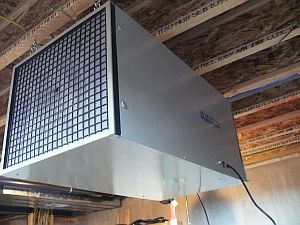Guys,
I got so in love with woodworking and started more and more to think about changing my house for another more suitable to have a woodshop. I see that a lot of folks have one in a basement. I am just wondering how you guys deal with wood dust? Most basements have common air forced heating/cooling airflow. Dust produced in a basement woodshop will be sucked in and distributed through whole house. On other side closing duct gates will prevent basement from heating and may rise unwanted changes in heating air flow. Oh, btw, the same concirn about finishing fumes.
What your thought on that?




 Reply With Quote
Reply With Quote . I do a lot of waterbase, a wiped on oil is OK and an occassional quick shot of spray shellac but anything larger than a trivial spray job is done outside or in the garage.
. I do a lot of waterbase, a wiped on oil is OK and an occassional quick shot of spray shellac but anything larger than a trivial spray job is done outside or in the garage.








